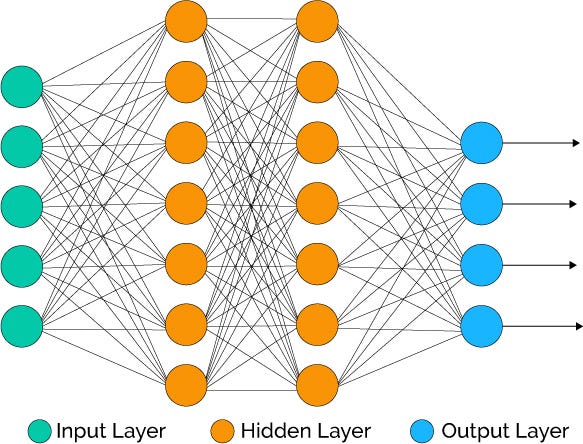'the biological
structure of the human brain forms a massive parallel network of simple
computation units that have been trained to solve these problems quickly. This
network, when simulated on a computer, is called an artificial neural network
or neural net for short.' - Dean Macri September 9, 2011
https://software.intel.com/en-us/articles/an-introduction-to-neural-networks-with-an-application-to-games
https://software.intel.com/en-us/articles/an-introduction-to-neural-networks-with-an-application-to-games
Artificial neural networks (ANN) are algorithmic constructs that allow machines to learn such as voice commands, managing play-lists and image recognition. A general ANN is made up of thousands of artificial neurons stacked in rows called layers forming millions of connections. Often layers are only interconnected with the layers either side of them through inputs and outputs. There are usually four essential layers of neurons; Convolution, Activation, Pooling and Fully connected.

The convolution layer/s thousands of neurons act as the first filter checking everything in the image looking for any patterns and as more images get processed the neurons learn and create filters which improves accuracy. A filter for fruit as an example the filter would look at it and check is it orange? While another checks the shape or the skin, basically taking a bunch of stuff/information and arranging it into piles (apples, oranges, pineapples etc). The convolution layer breaks down images into different features.
Advantages of ANN's is that they can learn in a nonlinear way such as seeing features in images that aren't immediately obvious. Such as items in bad lighting or piles or partially obscured by other objects, the activation layer serves as a kind of highlight tool for the easily spotted and harder to see objects.
As you may have guessed all this convolution will result in a massive amount of information which can become a nightmare for machines. The Pooling layer is designed to shrink into an easier more efficient form. Max pooling edits down feature maps into a sort of average so that only some examples are featured. Basically taking our categories and sifting through for the best average image of apples, oranges and pineapples and tossing out the rest.
A neural network designer can then gather the subsequent layered configurations and filter them to receive higher-level information. Meaning that it will then take a portion of the information and slowly build up layer upon layer and in the fully connected layer the pooled feature maps are connected to nodes on the output side and that represent the items that the ANN is learning to identify such apples, oranges and pineapples.
Comments
Post a Comment